#cucurbita draws
Text
🌱Root of the Month for July 2023: Squash Leaf 🌱
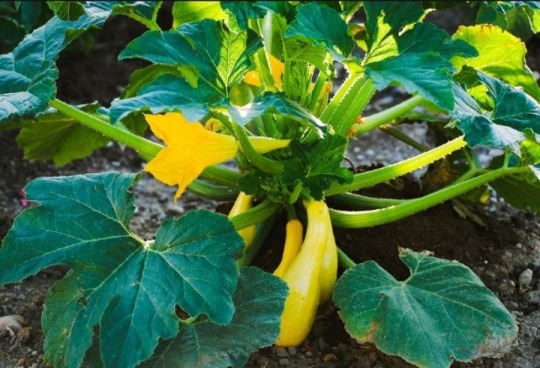
Squash Leaf: Squash is one of The Three Sisters (the others being, corn & beans) to us indigenous folks native to this sacred land. The Three Sisters serve as the culinary centerpiece in indigenous cultures across Turtle Island for thousands of years. Waste not, want not; flesh, seeds, leaves - every part of each plant is used in one form or another. Though Winter Squash comes to mind the most here in the Eastern Woodlands region, Summer Squash is also of use - particularly in warmer climates.
Of the Three, Squash is the Eldest Sister and is planted last among the three in a method presently called, companion planting. Therefore, it should come as no surprise that Squash leaves serve a purpose in traditional rootwork/medicine work. While there is little to no information broadcasting the spiritual uses of this flora, we can look to the ancestral practicies as well as the physical & behavior prosperities of the plant to intuitively understand their mystical aspects.
Taxa: Cucurbitaceae/Cucurbita/Moscato, maxima, mixta, or pepo
Folk Nomenclature: Eldest Sister (of Three Sisters)
Native Locality: North & Central America
Phenotypic Traits: Squash leaves are medium to large in size and are broad and kidney bean-shaped. Bright green, roughly-textured leaves feature 5-7 lobes and grow on thick, hairy stems with curling tendrils. Grows as a trailing vine, either on the ground or on trellises and has vibrant yellow flowers when in bloom.
Parts Used: Leaf, Seed
Gender: Unknown
Planetary Ruler: Unknown
Elemental Ruler: Unknown; likely Earth
Traditional Usage in Rootwork: Given as offerings to First Nations ancestors, and certain deified spirits; particularly those outside of the Hoodoo Paradigm, before given back to the Earth. Keep in a bowl in home to draw an abundance of resources & prosperity.
Traditional Medicinal Usage: Leaves are a powerful source of Fe (Iron), K (Potassium), Mg (Magnesium), and Ca (Calcium) as well as Vitamins A-C; with immune boosting benefits. When cooked, Squash leaves have a toothsome texture and a mild, green, spinach-like flavor. THE LEAVES ARE TO NEVER TO BE CONSUMED RAW.
#hoodoo#hoodoos#the hoodoo calendar#rootwork#rootworkers#the three sisters#three sisters#squash#winter squash#summer squash
3 notes
·
View notes
Text
Little goat drawing for your enjoyment!
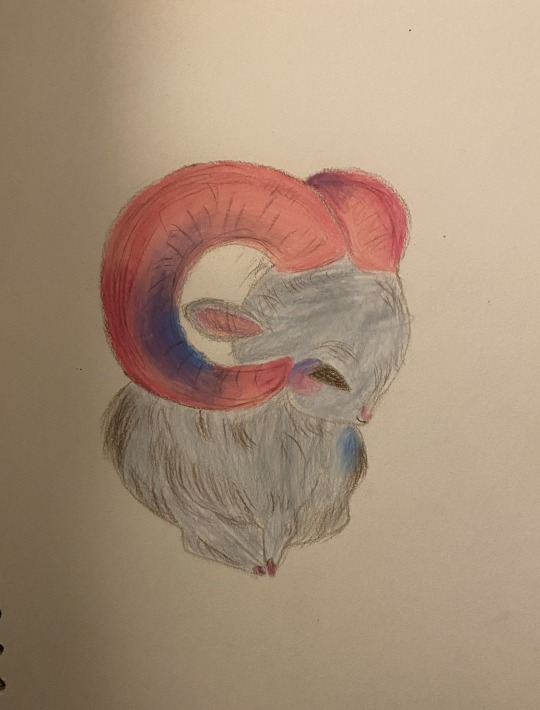
I know it’s not perfect but it’s I think it’s cute! Let me know what you think!
Idea from Cucurbita Moschata on Pinterest.
3 notes
·
View notes
Text
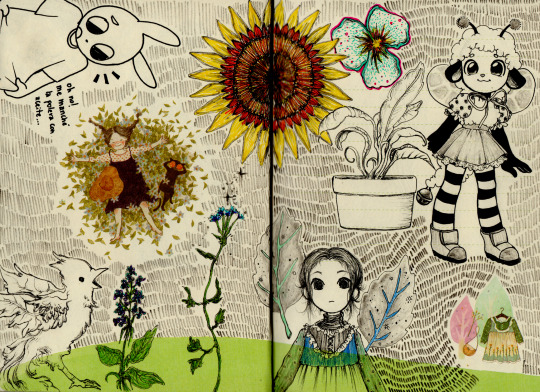

18 notes
·
View notes
Text

Cucurbita the pumpkin witch.
#digitalart#my drawings#my ocs#art#character#my art#original character#girl#fantasy#Witch#Pumpkin#Cucurbita
1 note
·
View note
Photo


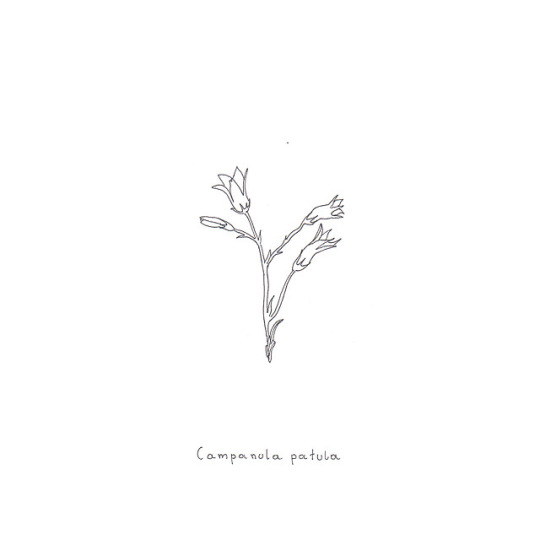
#pimpinella saxifraga#cucurbita pepo#campanula patula#herbs#plants#nature#natural#illustration#drawing#draw#pcitures#minimalist#minimalism#black and white#lenar#lineart#ilustracja#rysunek#obrazki#minimalizm#czarno białe#here hk#hk#hanna kaszewska#artists on tumblr
1K notes
·
View notes
Photo

5 notes
·
View notes
Text

dont be sad - draw your permababies being besties :)
music ♪
Osi (left) & Cucurbita (right)!
#this is very much a wip!! but i love them#flight rising#fr dragon share#dragon share#fr gijinka#fr snapper#fr gaoler#the wilds#townsfolk#osi#cucurbita#my art
7 notes
·
View notes
Text
Now that’s a giant pumpkin! Collected on this day in 2017

Happy Thanksgiving! And what’s screams fall more than pumpkin?
This specimen isn’t just any specimen – it is the museum’s first official Anthropocene collection. A 2090.5 pound squash, in fact. The Anthropocene, or Age of Humanity, is the proposed current time period marked by pervasive and long-term human impact on the Earth’s systems. The mark of human influence is now so great, that the effects will be present in the geological record millions of years from now. The Anthropocene is a core focus for the museum, drawing together many areas of research, education, and scholarship. These Anthropocene initiatives were launched, in part, through the 2017-2018 exhibition We Are Nature: Living in the Anthropocene. At the time of the exhibition’s opening, a gigantic squash was on display in the museum’s courtyard. This 2,090.5 pound pumpkin is a striking visual of the influence of humans on plant evolution in the Anthropocene.

But these huge pumpkins are not easy to grow. This specimen was from a plant grown in Ellwood City, PA by Dave and Carol Stelts. When they came to the museum to harvest seeds for next year, Bonnie Isaac, Collection Manager of Botany, collected a specimen for the herbarium. As you might guess, even the pieces don’t fit nicely on a typical herbarium sheet, but instead are stored in the 3D fruit collection.
Species in the genus Cucurbita (including pumpkins, gourds, and squashes) were domesticated by humans in North America about 10,000 years ago. That is, they were cultivated in gardens, likely first selected for the use of their durable rinds (anthropological evidence for gourds used as containers for drinking) and later as a food source. Most Cucurbita species went extinct around this time, coinciding with the extinction of large mammals that these species relied upon to spread their seeds. Their fruits were unpalatable to the smaller herbivores that did not go extinct. Ironically, it is human hunters, paired with climate change, that led to the extinction of large herbivores in North America. Modern day pumpkins have adapted to the Anthropocene.
This Anthropocene specimen isn’t your Halloween jack-o-lantern or pie pumpkin, which is Cucurbita pepo, but the related Cucurbita maxima, which can be grown to enormous sizes with skill and effort.
Find this specimen and more here.
Check back for more! Botanists at the Carnegie Museum of Natural History share digital specimens from the herbarium on dates they were collected. They are in the midst of a three-year project to digitize nearly 190,000 plant specimens collected in the region, making images and other data publicly available online. This effort is part of the Mid-Atlantic Megalopolis Project (mamdigitization.org), a network of thirteen herbaria spanning the densely populated urban corridor from Washington, D.C. to New York City to achieve a greater understanding of our urban areas, including the unique industrial and environmental history of the greater Pittsburgh region. This project is made possible by the National Science Foundation under grant no. 1801022.
Mason Heberling is Assistant Curator of Botany at the Carnegie Museum of Natural History. Museum employees are encouraged to blog about their unique experiences and knowledge gained from working at the museum.
#Carnegie Museum of Natural History#Great Pumpkin#Giant pumpkin#Thanksgiving#Botany#Plants#Pumpkins#Holidays#Cucurbita
21 notes
·
View notes
Text
♡ Pumpkins ♡

Pumpkins have a long history due to their relation to Halloween and being used to ward off evil. Celtic traditions used turnips, pumpkins, and other vegetables to ward off mischevious spirits on Samhain.
Scientific Name: Cucurbita pepo
It can be used in magick for: Granting wishes, love, prosperity, fertility and protection when carved.
Pumpkin is a very good choice for kitchen witches because it can be used for so many things. Pumpkin pie, soup, bread, salad and more. Here are a few recipes:
Crock-Pot Pumpkin Spice Latte
Pumpkin and Sage Stuffed Shells
Pumpkin and Scalloped Potatoes
Pumpkin Crumb Muffins
Incorporate pumpkins into your Samhain celebrations!
Light pumpkin scented candles when you wish to increase your power or psychic ability.
Carve scary faces into pumpkins and place outside to protect your home from negative spirits
Place a pumpkin near your divination tools to draw upon the unknown
Use pumpkin in sachets meant for warding away negative energy from your home
Warnings: Some say that early American legend maintained that leaving a half of a pumpkin open or exposed in any room, but especially the kitchen, would attract negative energies into your living space. Pumpkins that have begun to spoil were believed to suck the life energy from the people around them, and create illness and bad luck.
Created: July 15, 2019
♡
#pumpkin#pumpkins#halloween#samhain#magick#magic#witchcraft#witch#witches#witchblr#baby witch#witchling#hedge witch#kitchen witch#green witch
40 notes
·
View notes
Link
Archaeologists have struggled to explain the rapid rise and fall of Cahokia—the mysterious Mississippian mound-building culture that sprang up about a thousand years ago in the fertile southern Illinois bottom lands just across the river from modern-day St. Louis.
Scholars have painted the civilization as a hierarchical, highly centralized society where ruling elites demanded tribute from lowly peasant farmers who toiled in a culture spiritually obsessed with and highly dependent upon the cultivation of corn.
While there's little doubt that farming was the civilization's lifeblood, a new book by a paleoethnobiologist at Washington University in St. Louis offers a compelling case for a much different understanding of the Cahokian culture.
The book also offers a road map for the rediscovery and possible recultivation of an array of highly nutritious wild food sources, including a North American cousin of quinoa, that were once a staple part of the early American diet.
"The real story of Cahokia is about much more than maize and decisions made by a small group of elites," said Gayle Fritz, professor emerita of anthropology in Arts & Sciences and author of "Feeding Cahokia: Early Agriculture in the North American Homeland" (2019 University of Alabama Press).
"It's clear that the vast majority of Cahokia's farmers were women and it's likely that their critical knowledge of domesticated crops and wild food plants would have earned them positions of power and respect at every level of the society," she said.

Chenopod, which produces tiny seeds similar to quinoa, has been cultivated and consumed by Native Americans for thousands of years. Also known as lambsquarter or Goosefoot, its young leaves and buds can be prepared like spinach or broccoli when fresh. Credit: Gayle Fritz
Cahokia's rise and fall
Classified as a UNESCO World Heritage site, the Cahokia Mounds complex was the site of North America's largest and most populous city prior to European exploration.
Reaching its apex in the early years of the first millennium (1050 to 1200 A.D.), the city and immediately surrounding region boasted a population in the tens of thousands and exerted influence over other native settlements scattered across a wide swath of the American Midwest.
Then, for yet unexplained reasons, the civilization began to fade. By 1300 A.D., populations living in and near the Cahokia city center were plummeting. By the early 1500s, when European explorers first visited southeastern North America, the great city of Cahokia lay abandoned.
Some scholars suggest the demise was due to periods of heavy flooding or severe drought, or even a massive earthquake, and the impact these calamities may have had on an agricultural system that had grown increasingly dependent on maize.

Domesticated long ago by Native Americans, Marshelder, also known as sumpweed, can still be found growing wild in marshy bottomlands near Cahokia. Ill. Credit: Gayle Fritz
Fritz is not convinced
She questions the evidence for these disasters at Cahokia, as well as the notion that such severe weather events could have crippled the city's ability to feed itself. Her research shows that the city's food production network was extremely well diversified, stable, sophisticated and situated in some of the world's most fertile farmland. While natural disasters may have sparked de-stabilizing social or religious unrest, the women who controlled the society's farming complex were more than capable of weathering severe climatic disturbances, she argues.
Fritz documents early uses of what may have been America's first domesticated crop, a strain of bottle gourd that first floated to these shores—genetic evidence suggests—from Africa. She explores the origins of other early food crops, such as a native squash, sunflower, erect knotweed and chenopod, which were domesticated in the midcontinent and grown by generations of farmers before, during and after Cahokia's heyday.
Cultivating nature's bounty
Fritz details how these and other ancient food sources were gradually incorporated into field cultivation systems, with some eventually showing signs of genetic changes related to domestication. She backs up her assertions with clear overviews of the best available archaeological evidence, including her own early work on ancient stashes of native seeds in protected bluff shelters of the Ozark Plateau.
She also explains how early Americans learned to maximize harvests of wild nut crops, such as hickory and acorns, by giving the best mast-producing trees a competitive edge—girdling inferior trees and routinely burning off underbrush to gradually create stands that European explorers later described as "nut orchards."
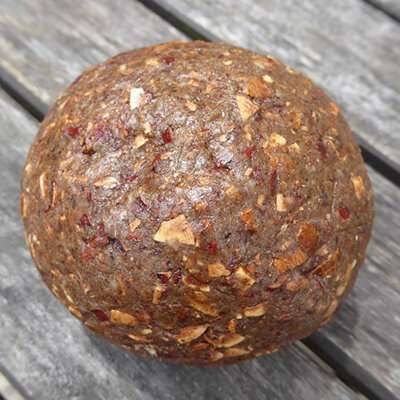
Ku-nu-che ball, three inches in diameter, made from cracked, sifted and pounded hickory nuts, for Cherokee hickory nut soup. Credit: Gayle Fritz
As her book makes clear, the evolving consensus on Cahokia's food culture is a function of rapidly improving scientific techniques and field work practices that are unlocking evidence often overlooked in earlier archaeological investigations.
Science still unlocking Cahokia's secrets
Recent studies have employed isotopic analysis of human bones from Cahokia to show that a surprisingly large percentage (perhaps 20-30 percent) of the residents arrived there from other locations in eastern North America.
A key breakthrough, she argues, is the now routine use of water flotation techniques to separate seeds and other organic particles from excavation dirt, allowing these fragments to be identified and further analyzed in the laboratory.
Early proponents of flotation studies, such as Patty Jo Watson of Washington University, used the technique to study samples collected along the Green River in Kentucky near the Salts and Mammoth caves. Their research showed that American hunter gatherers began adding cultivated crops to their diets as early as 2,500 B.C., resulting in heavy reliance on plants such as sunflower, marshelder, chenopod, erect knotweed and maygrass.
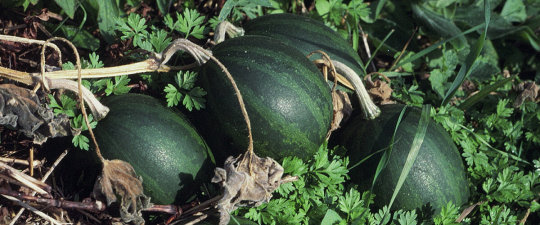
Cucurbita pepo gourds, such as these growing wild in the Illinois River Valley near Grafton, Ill., were one of the first plants to be domesticated by early Native Americans. Credit: Gayle Fritz
Seeing the cornucopia beyond the corn
In the past, researchers may have underestimated the importance of small grains in the diets of ancient civilizations because researchers sifted excavation dirt through larger screening devices designed to uncover pottery sherds, tool pieces and other larger-scale artifacts.
Traces of corn, with its large kernels and cobs, were easier to document than tiny wild grains the size of quinoa.
Dozens of large archaeological projects at Cahokia and surrounding sites have generated flotation-derived data showing that the native seed crops were produced in copious quantities during the centuries before and after Cahokia's rapid rise.
"The most unexpected finding was that pre-maize crops did not decline after corn was embraced at A.D. 900. Instead, all available crops—old and new—increased in abundance, giving urban Cahokia a biologically diverse food base, quite different from the corn-dominated cuisine sometimes described," Fritz said.

The Keller figurine, one of several flint-clay statues from the Mississippian mound-building culture unearthed near Cahokia Mounds, was once seen by some scholars as a “corn goddess” sitting on a row of corn cobs. Credit: Tim Vickers via Wikipedia Commons
Cahokia's women found power in the fields
But larger artifacts also figure into Fritz' theories about the role of women in Cahokian society. She builds her case for a farming system dominated by women and their daughters in part on a reassessment of small, flint-clay ceramic statues of women that have been unearthed at Cahokia and other Mississippian sites.
The figurines, which other researchers have described as corn goddesses, often depict an older woman kneeling with outstretched arms. The statues are embellished with intricately carved snakes, plant stalks and vines, and flower heads that some scholars have been quick to characterize as symbols of corn and fertility. Moreover, the statues have been interpreted as serving the goals of an elite-controlled priestly cult.
Fritz argues that many of the carvings more accurately represent sunflower seed heads and squashes, and that the tendency for other scholars to see corn is a function of zeacentric bias—an exaggerated fixation on the culture's perceived ideological elevation of maize.
Her explanation draws heavily on the work of Carol Diaz-Granados, a research associate at Washington University, and other scholars who have studied the imagery behind Native American art and rock drawings. This context suggests the Cahokia figurines represent a character known as "the old woman who never dies" or "grandmother" who is central to the beliefs of modern Siouan speaking tribes, such as the Mandan and the Hidatsa.
Women in these tribes who belonged to organizations called "Goose Societies" played a dominant roles in tribal farming and spiritual life, with younger women moving up through the ranks by virtue of their industriousness and the skills manifested by themselves and their kin groups in the farm fields.
"Long before corns, beans and squash became such a staple part of Native American diets across the midcontinent, it's likely that the women farmers of Cahokia were appealing to a similar Earth Mother to guide their cultivation and harvest of native grains, such as maygrass, sunflower and chenopods," Fritz said. "This alternative scenario situates the women—the farmers themselves—as key players rather than placing them under the control of an elite-centered priesthood."
#archaeology#native american#first nations#indigenous#women#woman#history#food#corn#squash#cooking#cahokia#illinois#mississippians
131 notes
·
View notes
Photo

One of the cutest squashes yet. Kind of want to draw a cartoon character from it. Funny enough, my yard is currently covered in watermelon and Joumou (Cucurbita Moschata aka Haitian Squash) vines that I didn’t even plant. Thankful for whatever critter made their home in my yard and carried these seeds along. I seriously find it funny these days at how little I actually need to do in my forest now that it’s finding it’s own balance. There is enough for me, the wildlife and my neighbors to eat from without the use of chemicals or even overworking myself. Imagine if we all were on the same page and we all had “too much.” It’s a lot more realistic and attainable then most people would think. I’m already thinking of who I will gift the first harvest of squashes and the many new dishes I’ll have a chance to experiment with. ・・・ #growninhaiti #haitiansquash #calabaza #joumou #haiti #ayiti #abundance #vines #growth #sharingiscaring #nogmos #nopesticides #organic #foodforest #selfsustaining #agroforestry #reforestation https://www.instagram.com/p/B9prgl4la5I/?igshid=5rb0vyubdfhz
#growninhaiti#haitiansquash#calabaza#joumou#haiti#ayiti#abundance#vines#growth#sharingiscaring#nogmos#nopesticides#organic#foodforest#selfsustaining#agroforestry#reforestation
1 note
·
View note
Photo

Say hello to Cucurbita, the pumpkin witch! Just wanted to draw something appropriate, as october is almost upon us.
103 notes
·
View notes
Photo


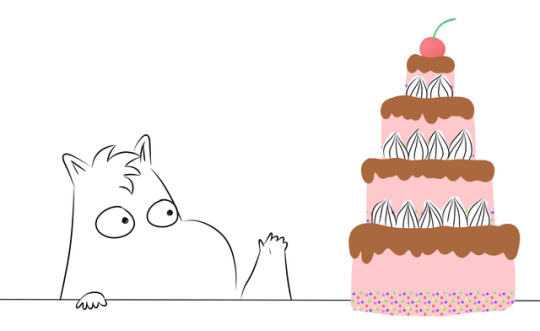
Moominsona requests for @canis-cucurbita @jadoorswon @missmeltycat (if you don’t mind me moominifying your oc), plus two of my own, and guest appearances from a couple others who have already seen the first drawing.
:D
38 notes
·
View notes
Photo
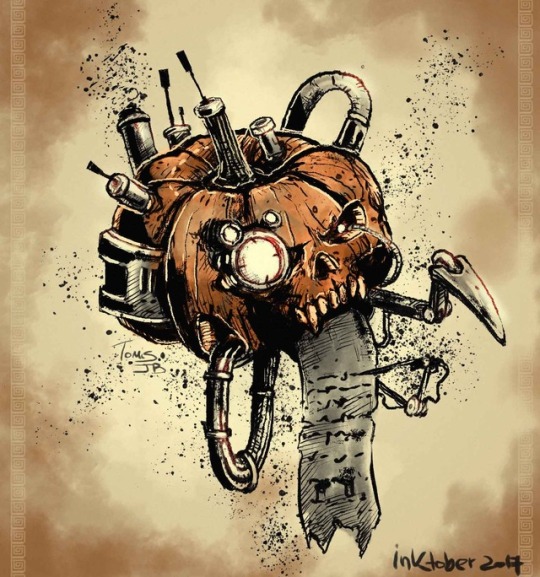
Inktober- day 18- Servo Cucurbita Pepo - Adept Squash
This would be the mascot for all my Warhammer40k related inktober drawings. I couldn’t ask for a more loyal servant. The lowest hanging fruit.
#inktober#inktober 2017#warhammer 40k#warhammer art#tomis art#my art#servo skul#servo pumpkin#low hanging fruit#mechanical#messy#inky#just my jam#silly things#adeptus mechanicus be damned#what a waste of resources#running low on skulls
630 notes
·
View notes
Photo
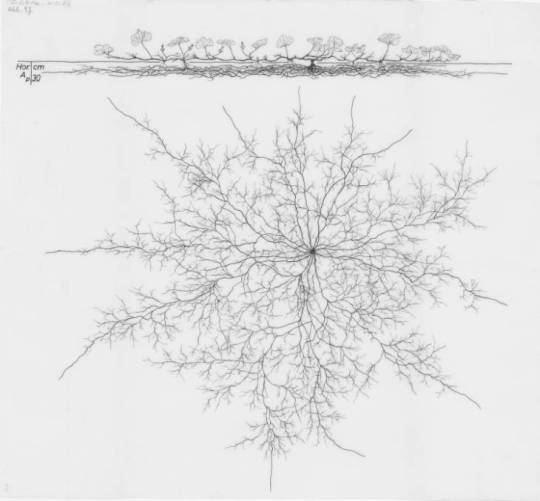
(via Cucurbita pepo convar. citrullina var. styriaca - Root System Drawings - Wageningen University & Research - Image Collections)
0 notes